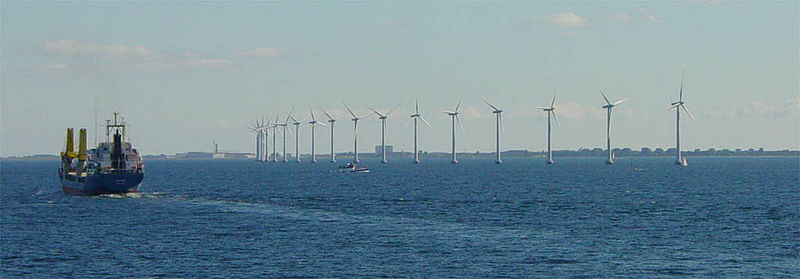Part 2 in a series on the recent Smart Cities Summit in Boston
I recently had the pleasure of going to the Smart Cities Summit and as someone who is new to the field, I felt like I learned something new and noteworthy both days of the conference. This post has a couple of blurbs on what I learned the second day, and my next post will go over the larger trends I observed.
New Bedford is positioning itself to become a wind powerhouse
Though I live relatively close to New Bedford, I don’t know much about it besides that it’s a port town and has been struggling for a long time. However, I got a little glimmer of that reputation changing during New Beford Mayor Jon Mitchell’s talk. He said that New Bedford is situated near reserves of offshore wind and that there’s enough wind energy out there to create an energy industry in New Bedford. They have already begun creating infrastructure for these wind farms off the coast of New Bedford and Massachusetts passed legislation recently that requires the state to produce at least 16 megawatts of offshore wind power in the next decade. Check our the articles below for more info:
- Offshore wind quietly reaches a milestone with arrival of survey ship in New Bedford
- Offshore wind developers to use largely empty New Bedford terminal
 These are Danish wind turbines, but it gives you an idea
These are Danish wind turbines, but it gives you an idea
Buildings can use vibrations to track the people inside
There were a lot of talks on using buildings as sensors. I have a lot of privacy concerns about that concept, but one group from Carnegie Mellon’s approach of using vibrations to detect building occupants without filming or recording audio is intriguing. This technique uses inexpensive sensors to detect occupants’ footsteps and can let building managers know where they are, who they are, what they’re doing and their health status. This is helpful for only using heating and cooling on occupied rooms or making sure everyone in the building is authorized to be there. In a less Big Brother-ly application, this group argues that this sort of tracking can be used to help the elderly know how far they can walk safely based on how steady their gait is.
One thing I didn’t realize is that everyone has a “gaitprint” that is unique to them and that can give sensor’s information on your identity, mood and health status. I can see this information being helpful, but also very easily abused if not regulated carefully. Based on the time lawmakers and regulators need to create these rules, I’m not optimistic that will happen before this sort of technology is commercialized.
Bacteria creates self-healing concrete
Concrete is a cheap, versatile building material, but it usually ages badly because of staining and cracks. One microbiologist is coming up with a way to deal with the cracks issue by embedding the concrete with bacteria that secretes calcite and recreates the missing limestone. I wonder if this sort of technique could also be used at some point to help build coral reefs or organic art installations. To read more about the self-healing projects in progress, check out the link below:
- http://www.smithsonianmag.com/innovation/with-this-self-healing-concrete-buildings-repair-themselves-180955474/
Those were the short summit highlights from day 2. I’m writing another post that takes a look at the Smart Cities industry as a whole based on this conference, so don’t despair if you wanted more Smart Cities Summit news ;)